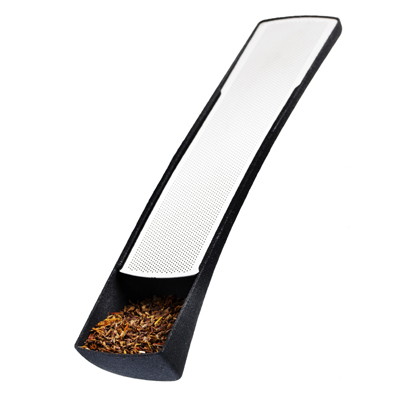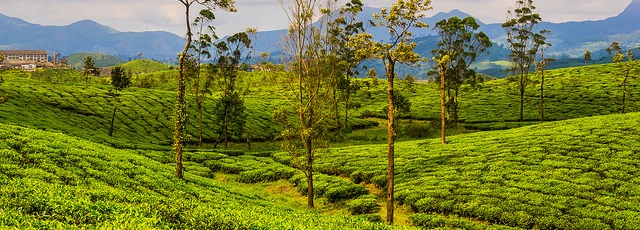Considered one of the seven necessities in the Chinese culture (along with rice, vinegar, firewood, salt, oil and soy souse) tea had earned its place as one of the most famous and beloved beverages among a vast number of nations around the world. This herbal drink and the intricate and detailed rituals that come with consuming it in China had been traced back centuries. There are some theories about how tea was first discovered and most of them sound as magical as the drink itself tastes. The most known legend is that tea was discovered by accident by Emperor Shen Nong in 2737 BC. It states that a leaf from a shrub fell into the water that a servant was boiling for the ruler and thus the first cup of tea was produced. The emperor loved the concoction and continued drinking it.
A period called the “Spring and Autumn period” existed around 771 BC – 476 BC when tea was firstly considered a medicine. During the Tang Dynasty (618–907 CE) tea drinking in China was becoming a social event and the herbs were widely produced and consumed around the country. It is interesting that during this time tea was prepared in a form of a compressed cake called teacake or brick tea. Water was added to powdered teacakes to create the brew. Around the 13-th century, the Chinese people developed new techniques and begun roasting the leaves. This probably was how the origins of the loose tea we know today came to be. Tea became a very important drink among Buddhist monks, as some types of tea contained caffeine much needed during the long hours of meditation.
The five most distinct kinds of tea in China are: white, green, black, oolong and dark tea (post-fermented), but there are many sub-categories or varieties of different drinks that are begotten from the main ones.

The Drosselmeyer Tea Infuser. Visit our Shop
White tea
Harvested from the Camellia sinensis plant, white tea is made by young and lightly processed leaves. It is sometimes referred to as Silvery Tip Pekoe or simply China White.
Green tea
Longjing, Bi Luo Chun and Huangshan Maofeng are the most commonly grown varieties of green tea in China. The health benefits of the green tea are well-known today and include cancer prevention. It is very popular around the world. It also has antibacterial and anti-inflammatory properties. This tea is made from Camellia sinensis and the oxidation process during its preparation is kept to a minimum. The leaves are dried as soon as they are picked and then fried.
Black tea
It is a type of post-fermented tea. Varieties of black tea like Keemun black tea (Anhui) and Dian Hong (Yunnan) have been made known worldwide. Black tea can reduce fat and lower the “bad cholesterol” levels.
Oolong tea
It is created during an interesting process where the leaves are left to dry under the sun where an oxidation occurs. This tea is very versatile in taste – from sweet like honey to woody and deep. Oolong tea translates like “black dragon tea” from Chinese.
Post-fermented or Dark tea
This tea is very special since it takes a long time (sometimes years) to go through a process of microbial fermentation. During this time the leaves become dark, hence the name – dark tea. The most known tea from this variety is Pu-erh and Anhua dark tea.
Yellow Tea
A very expensive kind of tea, it goes through a process similar to the one the green tea is made through. But before that, it is wrapped in a damp cloth for a period of three days. This makes the leaves a lot more aromatic in a way “sealing” the scent into the buds.
Famous and Interesting Chinese teas
Tieguanyin
Tieguanyin or the “Iron Goddess of Mercy” is a kind of an Oolong tea. There is an interesting legend about the origins of this tea. It tells a tale about a farmer who took care of an abandoned temple where a statue of the goddess Guanyin was. To reward him for his efforts the goddess appeared in a dream and told the farmer there is a treasure hidden in the temple – a tea plant. He grew the plant and shared it with his neighbors. With the money, they made from selling the tea the temple was repaired. A kilogram of this tea could be sold for 3000 USD, making it one of the most expensive teas in the world.
Lushan Cloud Tea
Starting as a wild tea, it was cultivated by a monk from the Donglin Temple and it soon became so popular that it was considered to be a tribute to the Emperors from the Song Dynasty. Now this tea is high- valued among Chinese people and foreigners for its fresh taste, inviting aroma and vibrant color.
Pu-erh Tea
This interesting variety of tea is manufactured in the Yunnan province and its name comes from the city of Pu’er. This kind of tea has been known to diminish fatty acid synthesis in the liver of rats. It could also be beneficial for losing weight and lowering cholesterol.
Keemun
This is a type of a black tea with smoky, woody scent and notes of unsweetened cocoa. Some of them have a more floral aroma, reminding us of orchids. This tea is predominantly produced in the Anhui province.
Wuyi Tea or Bohea Tea
It is also known as “rock tea” because of the place where it grows – a mountainside with a mineral-rich soil. This is one of the most expensive teas in the world, maybe because of the hard conditions of production. It has a smoky flavor mixed with a stone fruit.
Gunpowder tea or pearl tea
The name used in the western world comes from the shape of the leaves that are rolled into little balls. In Chinese, it is called Zhū chá or pearl tea. The leaves are processed firstly by withering, and then they are steamed, rolled and dried. Highest quality tea from this kind is still rolled by hand which gives more flavor because the leaves are being torn apart. This kind of the herb is very popular in the Maghreb region and used for the preparation of mint tea.
Flowering Tea or blooming tea
This one is very peculiar because it is made by wrapping dried flowers with dried tea leaves. When the tea meets the hot water, the little bundle slowly opens up, presenting the flower inside like magic. It is made in the Yunnan province.
Image Copyright: Steve Iksan, License: CC BY-SA 2.0



